Director Gaspar Noé’s Enter the Void follows drug dealing teen Oscar who, after being killed in Tokyo, watches over his sister from the otherworld. Images of Oscar’s subjective POV, many based on hallucinations and near death experiences, were created and augmented by Paris studio BUF. Vfx sup. Geoffrey Niquet talks to us about the unique nature of the film.
Watch BUFs making of click here
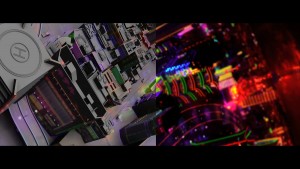 fxg: There’s so much to take in with Enter the Void and it feels like the visual effects were absolutely integral to the story the director wanted to tell. Was it easy to break down what the director wanted in terms of the visions and the subjective camera?
fxg: There’s so much to take in with Enter the Void and it feels like the visual effects were absolutely integral to the story the director wanted to tell. Was it easy to break down what the director wanted in terms of the visions and the subjective camera?
Niquet: Although the completed film is very close to the script, this is nonetheless an experimental project and the VFX and research were being done all the way up to delivery. For this reason, the breakdown was constantly evolving throughout the course of the shoot as well and through post. In order to prepare we did a battery of tests so that Gaspar could have ideas for effects when he got to shooting. Certain tests allowed us to envision the VFX we could achieve in post, others were thrown out as we searched for ideas. We had a crane on set, and Gaspar himself improvised the camera movement depending on how the actors did the scene or the architecture of the set. This was then assembled and smoothed out in post production to achieve a sense of flow and continuity. This is how almost the entire film was put together.
fxg: How did you conceptualise or plan or test the shots? What kind of artwork, storyboards or previz did you look to?
Niquet: It would have been difficult to work with storyboards or a previz. The director really needed to see all of the possibilities for a shot before deciding which direction to take it. What we did instead was present many proposals for images within the continuity of the shot. Our interaction with Gaspar was centered on the exchange of the shots. On his side, he nourished the imagination of the team by providing many references from experimental cinema.
fxg: What were some of the tools and techniques you used to construct the flyover of Tokyo following Oscar’s death?
Niquet: For the high altitude flyover we began by mocking up a flight path working from helicopter footage shot on video. We then modeled the neighborhoods and added textures using the digital stills. To give a dreamlike quality to these shots, we accentuated the colors of the neon signs, the reflections on the wet sidewalks and blacks of the roofs. This one continuous shot is 5 minutes long. BUF proprietary software was used for the work.
fxg: How did you approach the astral visions and hallucinations seen in the film in terms of the tools and animation techniques?
Niquet: Initially we spent quite a lot of time on research. We had to give a specific look to the astral vision shots, a way of representing the the distortions in perception of this POV as the character has visions and hallucinations, but we didn’t want the “technology” to be too obvious to the viewer. Finally the main techniques used were to accentuate the depth of field and the different flickers. For the DMT hallucinations, the challenge was to translate visually the sensations the drug creates. We needed images that were at the same time beautiful, troubling, impressive while remaining organic. Among our principal references was the work of the botanist Edouard Marie Heckel.
fxg: The ovum and sperm sequence has some amazing colour and specularity. Can you talk about the technical approach to those inner-body shots?
Niquet: We worked from medical endoscopic stills and film in order to reproduce this as realistically as possible in terms of scale, textures and movement. Then to separate ourselves a little from reality we lit it with psychedelic light and color.
fxg: Can you talk about the fisheye lens shots?
Niquet: This was one of the concepts already in the script. On the other hand, research and design for this section continued all the way through the production. Finally what we did was to rebuild the sets entirely in 3D and we developed a camera shader just for this work. Another “layer” was added by progressively bringing up the reflections in the environment in order to give a sense of the effect going on to infinity.
fxg: At some points the images flicker quite wildly. How was this effect achieved?
Niquet: Over one hundred different proposals were made to the director. The flickers mix aberrations of chroma, focus and ghosting. Gaspar chose three, that were then applied to the entire film. This allowed him to adjust the timing and play with the look in the edit. We then applied the flicker to conform to his edit. The logistics of the project meant we had to face some new storage needs, as it required an enormous amount of memory. In only a few weeks we had quadrupled the weight of the DPX log images– there were 10 hours of images!
fxg: What were some of the challenges of moving from live action to digital, especially with quite frenetic camera moves and moving through walls and buildings?
Niquet: For the soul’s travel from one location to another, a BUF supervisor oversaw the shooting of the different streets and apartments. Then the editor back in Paris assembled them, but there was a pretty serious problem with the realism and continuity of the geography. We modeled all of the rooms and we placed them so we could achieve continuity via camera movement. We then added crowds and the cars in 3D to bring the city to life. This section represents 20 minutes of the film. For reasons related to the rhythm of the edit, the speed of these flyovers was multiplied by three during the course of production. There are lots and lots of little details that only cinephiles watching a DVD will notice.
fxg: Can you talk about your interaction with the director and what kind of ‘to and fro’ you had in discussing the effects, especially with Buf as one of the producers on the film?
Niquet: Working with Gaspar was much more of a collaboration than being a vendor. Even if he did have an idea of the precise effect he wanted, he always left room for another interpretation in the search for new ideas. This approach of being able to experiment together was made possible because of BUF’s being a co-producer of the film.

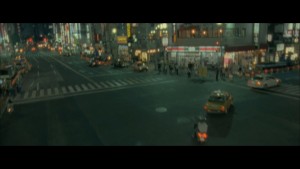
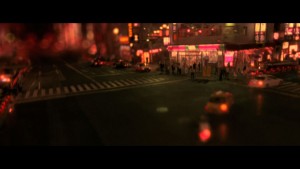
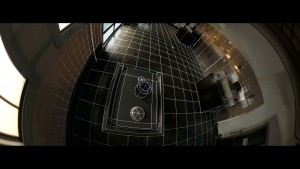
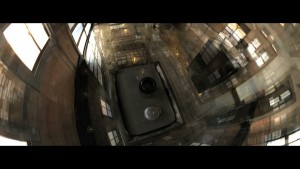
Pingback: Enter the Void: Love Hotel Scene and the Afterimages effect. Frame by Frame. NSFW | ildron
Pingback: 81. ENTER THE VOID (2009) | 366 Weird Movies